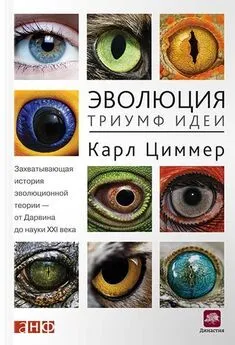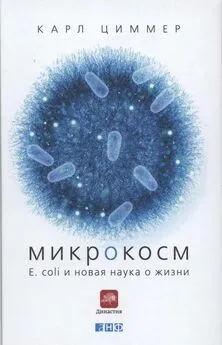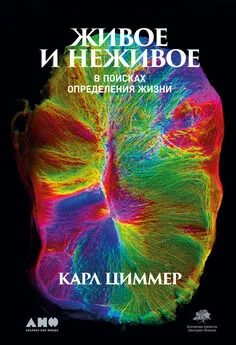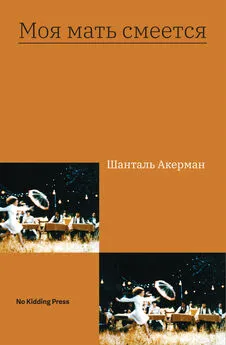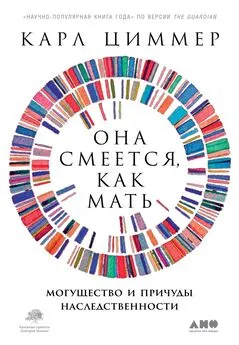Карл Циммер - Она смеется, как мать [Могущество и причуды наследственности] [litres]
- Название:Она смеется, как мать [Могущество и причуды наследственности] [litres]
- Автор:
- Жанр:
- Издательство:Литагент Альпина
- Год:2020
- Город:Москва
- ISBN:978-5-0013-9210-1
- Рейтинг:
- Избранное:Добавить в избранное
-
Отзывы:
-
Ваша оценка:
Карл Циммер - Она смеется, как мать [Могущество и причуды наследственности] [litres] краткое содержание
И культура, и традиции, география и экономика, технологии и то, в каком состоянии мы оставим планету, наконец. По мере развития науки появляется все больше способов вмешиваться в разные формы наследственности, что открывает потрясающие возможности, но одновременно ставит новые проблемы.
Технология CRISPR-Cas9, используемая для редактирования генома, генный драйв и создание яйцеклетки и сперматозоида из клеток кожи – список открытий растет с каждым днем, давая достаточно поводов для оптимизма… или беспокойства. В любом случае прежним мир уже не будет.
Карл Циммер знаменит своим умением рассказывать понятно. В этой важнейшей книге, которая основана на самых последних исследованиях и научных прорывах, автор снова доказал свое звание одного из лучших научных журналистов в мире.
Она смеется, как мать [Могущество и причуды наследственности] [litres] - читать онлайн бесплатно ознакомительный отрывок
Интервал:
Закладка:
“Dwarf Alberta Spruce.” Boston: The Arnold Arboretum of Harvard University, http://arboretum.harvard.edu/wp-content/uploads/Picea_glauca.pdf.
Eames, Ninetta. 1896. “California’s Great Plant Specialist: Luther Burbank, the Wizard of Horticulture.” San Francisco Call, March 8.
Eaton, Sally A., Navind Jayasooriah, Michael E. Buckland, David Ik Martin, Jennifer E. Cropley, and Catherine M. Suter. 2015. “Roll Over Weismann: Extracellular Vesicles in the Transgenerational Transmission of Environmental Effects.” Epigenomics. doi: 10.2217/epi.15.58.
Edwards, Matthew D., Anna Symbor-Nagrabska, Lindsey Dollard, David K. Gifford, and Gerald R. Fink. 2014. ”Interactions between Chromosomal and Nonchromosomal Elements Reveal Missing Heritability.” Proceedings of the National Academy of Sciences of the United States of America 111: 7719–22.
Edwards, R. G., P. C. Steptoe, and J. M. Purdy. 1970. “Fertilization and Cleavage in Vitro of Preovulator Human Oocytes.” Nature 227: 1307–09.
Egan, Michael F., Terry E. Goldberg, Bhaskar S. Kolachana, Joseph H. Callicott, Chiara M. Mazzanti, Richard E. Straub, David Goldman, and Daniel R. Weinberger. 2001. “Effect of COMT Vall08/158 Met Genotype on Frontal Lobe Function and Risk for Schizophrenia.” Proceedings of the National Academy of Sciences of the United States of America 98: 6917–22.
Egeland, Janice A., Daniela S. Gerhard, David L. Pauls. James N. Sussex, Kenneth K. Kidd, Cleona R. Alien, Abram M. Hostetter, and David E. Housman. 1987. “Bipolar Affective Disorders Linked to DNA Markers on Chromosome 11.” Nature 325: 783–89.
Ehrlich, Paul, and Marcus Feldman. 2003. “Genes and Cultures: What Creates Our Behavioral Phenome?” Current Anthropology 44: 87–101.
Eliav-Feldon, Miriam, Benjamin Isaac, and Joseph Ziegler, eds. 2010. The Origins of Racism in the West. Cambridge: Cambridge University Press.
Ellis, Erie C. 2015. “Ecology in an Anthropogenic Biosphere.” Ecological Monographs 85: 287–331.
________. 2017. “Nature for the People.” Breakthrough Journal no. 7, Summer, https://thebreakthrough.org/index.php/journal/issue-7/nature-for-the-people(accessed September 16, 2017).
Ellison, Jay W., Jill A. Rosenfeld, and Lisa G. Shaffer. 2013. “Genetic Basis of Intellectual Disability.” Annual Review of Medicine 64: 441–50.
Endersby, Jim. 2009. A Guinea Pig’s History of Biology. Cambridge: Harvard University Press.
Engelstad, Kristin, Miriam Sklerov, Joshua Kriger, Alexandra Sanford, Johnston Grier, Daniel Ash, Dieter Egli, and others. 2016. “Attitudes toward Prevention of MtDNA-Related Diseases through Oocyte Mitochondrial Replacement Therapy.” Human Reproduction 31: 1058–65.
Epstein, David. 2013. “How an 1836 Famine Altered the Genes of Children Born Decades Later.” io9 , August 26. http://io9.gizmodo.com/how-an-1836famine-altered-the-genes-of-children-born-d-1200001177(accessed July 24, 2017).
Eror, Aleks. 2013. “China Is Engineering Genius Babies.” Vice , March 15.
Esvelt, Kevin M„Andrea L. Smidler, Flaminia Catteruccia, and George M. Church. 2014.”Concerning RNA-Guided Gene Drives for the Alteration of Wild Populations.” eLife 3: el601964.
Evans, Janice P., and Douglas N. Robinson. 2011. “The Spatial and Mechanical Challenges of Female Meiosis.” Molecular Reproduction and Development 78: 769–77.
Even, Dan. 2011. “Dead Woman’s Ova Harvested After Court Okays Family Request.” Haaretz, August 8.
Evrony, Gilad D. 2016.”One Brain, Many Genomes.” Science 354: 557–58.
Fairfax Cryobank. “Donor Search.” https://www.fairfaxcryobank.com/search/(accessed August 24, 2017).
Falconer, Bruce. 2012. “We Are Family – Ancestry.com Can Prove It.” SFGate, September 21. http://www.sfgate.com/business/article/we-are-family-ancestry-com-can-prove-it-3884980.php(accessed August 6, 2017).
Falick Michaeli, Tal, Yehudit Bergman, and Yuval Gielchinsky. 2015. “Rejuvenating Effect of Pregnancy on the Mother.” Fertility and Sterility 103: 1125–28.
Falk, Raphael. 2014. “A Century of Mendelism: On Johannsen’s Genotype Conception.” International Journal of Epidemiology 43: 1002–07.
Fancher, Raymond E. 1987. The Intelligence Men: Makers of the IQ Controversy. New York: W. W. Norton.
Felsenfeld, Gary. 2014. “The Evolution of Epigenetics.” Perspectives in Biology and Medicine 57: 132–48.
Feyrer, James, Dimitra Politi, and David N. Weil. 2013. “The Cognitive Effects of Micronutrient Deficiency.” National Bureau of Economic Research Working Paper Series, working paper19233. http://www.nber.org/papers/wl9233.
“Find Your Inner Neanderthal.” 2011. 23andMe blog, December 15. https://blog.23andme.com/ancestry/find-your-inner-neanderthal/(accessed July 25, 2017).
Finger, Stanley, and Shawn E. Christ. 2004. “Pearl S. Buck and Phenylketonuria (PKU).” Journal of the History of the Neurosciences 13: 44–57.
Fischbach, Ruth L., and John D. Loike. 2014. “Maternal-Fetal Cell Transfer in Surrogacy: Ties That Bind.” American Journal of Bioethics 14: 35–36.
Fisher, Elizabeth M. C, and Jo Peters. 2015. “Mary Frances Lyon (1925-2014).” Cell 160: 577–78.
Fisher, James, and Robert A. Hinde. 1949. “The Opening of Milk Bottles by Birds.” British Birds 42: 57.
Fishman, Lila, and John H. Willis. 2005. “A Novel Meiotic Drive Locus Almost Completely Distorts Segregation in Mimulus (Monkey flower) Hybrids.” Genetics 169: 347–53.
Flannery, Kent V., and Joyce Marcus. 2012. The Creation of Inequality: How Our Prehistoric Ancestors Set the Stage for Monarchy, Slavery, and Empire. Cambridge: Harvard University Press.
Flores-Sarnat, Laura, Harvey B. Sarnat, Guillermo Davila-Gutierrez, and Antonio Álvarez. 2003. “Hemimegalencephaly: Part 2. Neuropathology Suggests a Disorder of Cellular Lineage.” Journal of Child Neurology 18: 776–85.
Flynn, James Robert. 2009. What Is Intelligence?: Beyond the Flynn Effect. Cambridge: Cambridge University Press.
Ford, Edmund Brisco. 1977. “Theodosius Grigorievich Dábzhansky, 25 January 1900 – 18 December 1975.” Biographical Memoirs of Fellows of the Royal Society 23: 59–89.
Fordham, Alfred J. 1967. “Dwarf Conifers from Witches’ – Brooms.” Arnoldia 27: 29–50.
Forsberg, Lars A., David Gisselsson, and Jan P. Dumanski. 2016. “Mosaicism in Health and Disease – Clones Picking Up Speed.” Nature Reviews Genetics 18: 128–42.
Fosse, Roar, Jay Joseph, and Ken Richardson. 2015. “A Critical Assessment of the Equal-Environment Assumption of the Twin Method for Schizophrenia.” Frontiers in Psychiatry 6: 62.
Foster, Gavin L., Dana L. Royer, and Daniel J. Lunt. 2017. “Future Climate Forcing Potentially without Precedent in the Last 420 Million Years.” Nature Communications 8.doi: 10.1038/ncomms14845.
Foster, Kevin R., Jonas Schluter, Katharine Z. Coyte, and Seth Rakoff-Nahoum. 2017. “The Evolution of the Host Microbiome as an Ecosystem on a Leash.” Nature 548: 43–51.
Francis, Gregory. 2014. “Too Much Success for Recent Groundbreaking Epigenetic Experiments.” Genetics 198: 449–51.
Frank, Steven A. 2014. “Somatic Mosaicism and Disease.” Current Biology 24: R577–81.
Franklin, Sarah. 2013. Biological Relatives IVF. Stem Cells, and the Future of Kinship. Durham and London: Duke University Press.
Freed, Donald, Eric L. Stevens, and Jonathan Pevsner. 2014. “Somatic Mosaicism in the Human Genome.” Genes 5: 1064–94.
Frederickson, George. 2002. Racism: A Short History. Princeton, NJ: Princeton University Press.
Friedrich, Otto. 2014. City of Nets: A Portrait of Hollywood in the 1940s. New York: Harper Perennial.
Friese, Kurt Michael. 2010. A Cook’s Journey: Slow Food in the Heartland. Ice Cube Books. Fu, Qiaomei, Alissa Mittnik, Philip L. F. Johnson, Kirsten Bos, Martina Lari, Ruth Bollongino, Chengkai Sun, and others. 2013. “A Revised Timescale for Human Evolution Based on Ancient Mitochondrial Genomes.” Current Biology 23: 553–59.
Fu, Qiaomei, Cosimo Posth, Mateja Hajdinjak, Martin Petr, Swapan Mallick, Daniel Fernandes, Anja Furtwangler, and others. 2016. “The Genetic History of Ice Age Europe.” Nature 534: 200–05.
Funkhouser, Lisa J., and Seth R. Bordenstein. 2013. “Mom Knows Best: The Universality of Maternal Microbial Transmission.” PLOS Biology 11:e1001631.
Gajecka, Marzena. 2016. “Unrevealed Mosaicism in the Next-Generation Sequencing Era.” Molecular Genetics and Genomics 291: 513–30.
Galant, Debra. 1998. “The Egg Men.” New York Times, March 1.
Gallagher, Andrew. 2013. “Stature, Body Mass, and Brain Size: A Two-Million-Year Odyssey.” Economics and Human Biology 11: 551–62.
Galton, Francis. 1865. “Hereditary Talent and Character.” Macmillan’s Magazine 12: 157–66.
________. 1869. Hereditary Genius: An Inquiry into Its Laws and Consequences. London: Macmillan.
________. 1870. “Experiments in Pangenesis, by Breeding from Rabbits of a Pure Variety, into Whose Circulation Blood Taken from Other Varieties Had Previously Been Largely Transfused.” Proceedings of the Royal Society of London 19: 393–410.
________. 1883. Inquiries into Human Faculty and Its Development. London: Macmillan.
________. 1889. Natural Inheritance. London: Macmillan.
________. 1909. Memories of My Life. London: Methuen.
Galupa, Rafael, and Edith Heard. 2015. “X–Chromosome Inactivation: New Insights into Cis and Trans Regulation.” Current Opinion in Genetics & Development 31: 57–66.
Gannett, Lisa. 2013. “Theodosius Dobzhansky and the Genetic Race Concept.” Studies in History and Philosophy of Biological and Biomedical Sciences 44: 250–61.
Gantz, Valentino M., and Ethan Bier. 2015. “The Mutagenic Chain Reaction: A Method for Converting Heterozygous to Homozygous Mutations.” Science 348: 442–44.
Gantz, Valentino M., Nijole Jasinskiene, Olga Tatarenkova, Aniko Fazekas, Vanessa M. Macias, Ethan Bier, and Anthony A. James. 2015. “Highly Efficient Cas9-mediated Gene Drive for Population Modification of the Malaria Vector Mosquito Anopheles stephensi.” Proceedingsof the National Academy of Sciences of the United States of America 112: E6736E6743.
Gapp, Katharina, Ali Jawaid, Peter Sarkies, Johannes Bohacek, Pawel Pelczar, Julien Prados, Laurent Farinelli, Eric Miska, and Isabelle M. Mansuy. 2014. “Implication of Sperm RNAs in Transgenerational Inheritance of the Effects of Early Trauma in Mice.” Nature Reviews Neuroscience 17: 667–69.
Gapp. Katharina, Saray Soldado-Magraner, Maria Alvarez-Sánchez, Johannes Bohacek, Gregoire Vernaz, Huan Shu, Tamara B. Franklin, David Wolfer, and Isabelle M. Mansuy.2014. “Early Life Stress in Fathers Improves Behavioural Flexibility in Their Offspring.” Nature Communications 5: 5466.
Gärdenfors, Peter, and Anders Högberg. 2017. “The Archaeology of Teaching and the Evolution of Homo docens.” Current Anthropology 58: 188–208.
Garrett, Henry E. 1955. General Psychology. New York: American Book Co.
________. 1961. “The Equalilarian Dogma.” Perspectives in Biology and Medicine 4: 480–84.
Читать дальшеИнтервал:
Закладка:
![Обложка книги Карл Циммер - Она смеется, как мать [Могущество и причуды наследственности] [litres]](/books/1075049/karl-cimmer-ona-smeetsya-kak-mat-moguchestvo-i-pr.webp)

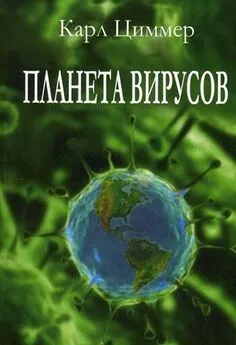
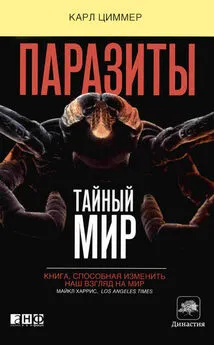

![Карл Циммер - Паразит – царь природы [Тайный мир самых опасных существ на Земле] [litres]](/books/1067054/karl-cimmer-parazit-car-prirody-tajnyj-mir-sam.webp)
